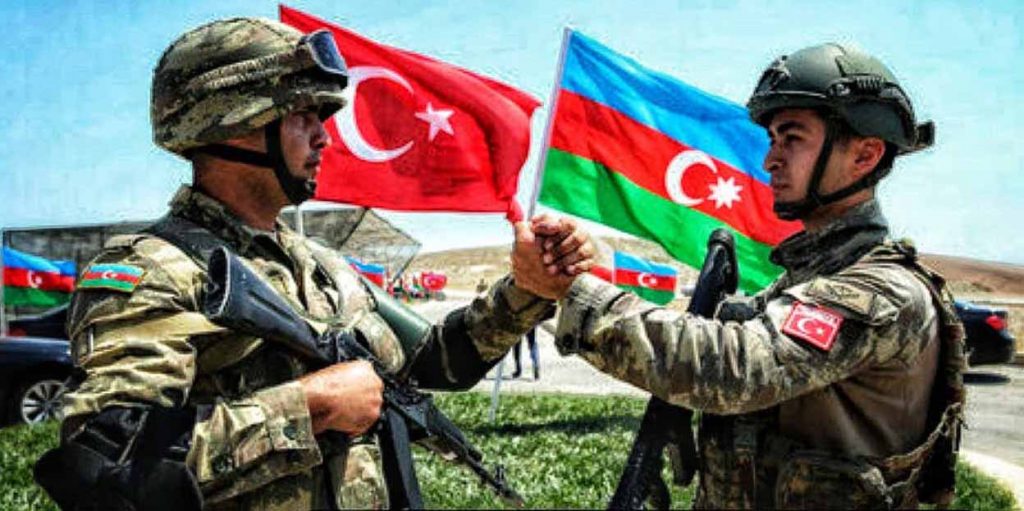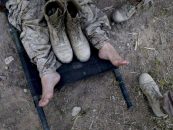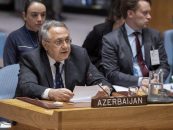By Firdovsiyya Ahmedova, Ph.D.,Assoc.professor, The Academy of Public Administration under the President of the Republic of Azerbaijan
The 44-day military operations, also known both as the Second Karabakh or the Patriotic War in Azerbaijan’s modern history, have resulted in the liberation of the territories from the 30-year-long occupation.
The phrase “the second Karabakh war”, which resulted in the victory of the Azerbaijani people, naturally means that there was also the first Karabakh war. The significance of the First Karabakh War, which is also characterized by the loss of many lives for Azerbaijan, for our people, and statehood, lies in the fact that this war had broken out.
In other words, discontent and dissatisfaction with the occupation of own lands coupled with heavy socio-economic state of the people, rising in arms against the enemy with almost lack of weapons and ammunition, the realization of the independent army building, the conduct of military operations are enough to have the name of the nation among the heroic nations.
A lot of political and military terms related to Karabakh can be used in the history of Azerbaijan in the 20th century. The 1905-1906 Armenian-Muslim conflict in Karabakh, the genocide of the Muslim population of Karabakh in 1918, the Karabakh march of the Caucasus Islamic Army in the autumn of the same year, the Karabakh operation in the spring of 1920.
The Karabakh region became important geography in Azerbaijan’s political and military life in the early and late 20th century. If 100 years ago, during the period of the republic, the government did not accept the existence of the “Karabakh problem”, they were forced to take political and military measures over the Karabakh region.
The first issue agreed by the Republic of Azerbaijan when the Armenian state was established on the ancient Azerbaijani land, was related to the upper part of Karabakh. After the liberation of Baku, the next military operation was carried out in the territory of Karabakh. Azerbaijan’s rule was restored in Karabakh. The year 1919 began with the establishment of the Karabakh Governor-General’s Office and played an important role in the history of our statehood and in ensuring its territorial integrity.
Just as 1920 was the last calendar year in the history of the republic, the Karabakh operation was the last successful military event then. In fact, it was the uprising of the Armenians in Karabakh in March 1920 that should have determined the fate of the republic.
Although the newly-built Azerbaijani army suppressed the uprising, defeated the enemy, and was determined to liberate Zangazur, the northern borders were not adequately defended due to the mobilization of the Azerbaijani troops involved mainly in the Karabakh theater of operations. However, the diplomatic threats of Soviet Russia and the accumulation of strong troops on the northern borders of Azerbaijan directly undermined the security of the Azerbaijani state, and at the end of the day, ended its existence with a sudden and rapid attack.
During the Soviet period, the upper part of Karabakh became a topic of discussions between Soviet Azerbaijan and Armenia. More specifically, Armenia’s Soviet leadership wanted to seize what the Dashnak government failed to succeed in.
Despite the inclinations and support of the central Bolshevik elite of the Soviet government, in 1921, it was forced to accept the opinion of the Azerbaijani government, emphasizing that Karabakh, together with the mountainous and plain parts, was a single territorial unit and an integral part of Azerbaijan. However, due to the efforts of the central and local non-Azerbaijani Bolsheviks, especially the Armenian Bolsheviks, in 1923, the upper part of Karabakh was granted administrative autonomy within Azerbaijan.
Although bringing the Karabakh issue to the fore of the political agenda at the end of WWII did not bring any practical changes, the Armenians were waiting for the next opportunity as the main task of their political, religious, and ideological activities. The world Armenians mobilized the internal and external forces of the USSR, fully preparing for the opportunity in the process of “perestroika” of the Soviet Union, directing this process into ensuring their interests.
The Karabakh problem had already become the focus of the supreme power in the USSR. From the onset, the decisions taken by the Armenian Soviet government at the legislative level made it impossible to find a political solution to the issue.
The aggressive policy launched by the Armenian SSR under the auspices of the central Soviet government soon turned into violent acts against local Azerbaijanis in Armenia, and after their expulsion, the open conflict within the borders of the Azerbaijani SSR led to the occupation of lands.
The “regulatory mechanism” applied by the USSR leadership, resulted in the expulsion of Azerbaijanis from their homes and lands in the Nagorno-Karabakh Autonomous Region in the example of the “Volskiy committee”. The organized will of the Azerbaijani people did not allow the implementation of the plan to separate “Nagorno-Karabakh” from Azerbaijan and annex it to Armenia through Russia.
The people of Azerbaijan, who displayed national solidarity against aggression, forced the central government to reckon with their opinion through political actions. As far back as 1920, under the Soviet period, the Armenians initiated the separation and annexation of the mountainous part of Karabakh from Azerbaijan through Russia. The same scenario was not materialized through the Volskiy Committee.
The independence of the Republic of Armenia began with an open military aggression and genocide against Azerbaijan. The Republic of Armenia began to write its own history of independence with the Garadagli, Khojaly genocides, the occupation of Shusha and Lachin.
In fact, the 30-year-long history of the modern Republic of Armenia is the history of aggression, massacre, genocide, looting, and occupation to the present day. Of course, the world Armenians presented and propagated all this bloody history as a history of “heroism”, but when the situation after the 44-day 2020 military operations came to light worldwide, the picture of vandalism in the 21st century did not probably surprise the people of Azerbaijan who repeatedly experienced the barbarism of Armenians.
The people of Azerbaijan, who have experienced living as refugees, massacre, looting, occupation, all kinds of unimaginable violence, and torture for 100 years, have seen the ugliness of the Armenian hostility at all levels, but the Armenian hypocrisy has managed to cover its savage face capable of all brutalities as a “victim” of the Turkic-Muslim world.
Actually, the authors of the Armenian “oppression” idea have always been the political circles of the colonial powers. By creating an image of the “oppressed”, the Christian minority of the Armenians in the Ottoman Turkey, they promoted the services of their spiritual institution in a wider area.
Each of the states that divided the Ottoman territories played a role in the emergence and expansion of the Armenian separatism. The Russian empire, which had waged several wars against the Ottoman empire in the 19th century, used the Armenians in its Caucasus policy in a strategic sense before the “Armenian issue” became an international one.
Realizing the danger of maintaining the conquered South Caucasus within the scope of the Muslim borders, it began to establish a Christian administrative basis for itself. The Armenian province, organized by the tsarist regime in the territory of Nakhchivan and Iravan khanates, did not meet the expectations of the Armenians.
Organized politically, Armenians, who were Russia’s subjects but did not consider the Russian tsar as their own “king”, began open separatism in church-party-diaspora cooperation. At the end of the XIX and the beginning of the XX centuries, the Armenian separatism acquired a terrorist nature with the assassination of many Russian government officials. Armenians’ threats did not seriously concern the Russian authorities, neither in the relevant regions nor in the center. In order not to increase social and political tensions in the country, the concessional position of the central authorities did not eliminate the foundations of the Armenian separatism.
WWI provided suitable conditions for the enthusiastic mobilization of world Armenians. World Armenians began an organized struggle to snatch “something” from the Russian emperor. What was more real than the ideological, diplomatic, and political front of the struggle was the military mobilization.
Ottoman Armenians, who considered Russian Armenians as their teachers, took up arms and were ready to fight against the state of which they were subjects. There were numerous appeals from Armenians far away from the Caucasus to fight against Ottoman Turkey voluntarily.
Consequently, the zeal of Armenians in the Russian contingent of the Caucasus front, which took the content of the Russian-Ottoman war, resulted in the mass massacre of Muslim Turks following the opening of the second front inside Turkey by the Ottoman Armenians.
In the early 20th century, especially during the world war, the states that allowed Armenians to commit massacres bear historical responsibility for those bloody tragedies.
Along with the responsibilities of powerful states, the Russian empire bore the same responsibility both for the killings of hundreds of thousands of Muslim Turks along with the deaths of Armenians, who claimed to have been subjected to “genocide”. However, Armenians died in the process of relocation inside the country as a result of their own crimes against Turks.
Armenian gang leaders, who fled Ottoman lands and took refuge in Russia and in the South Caucasus, took revenge on Azerbaijanis. They were protected both by Russia’s tsarist government, as well as the interim and Bolshevik governments, and accumulated strength. In 1918, they claimed revenge for the events of 1915 when they massacred the Muslim population in Eastern Anatolia, in the South Caucasus, and in South Azerbaijan.
During the Muslim-Turk massacres of 1918, the Armenians were collaborating with the Trans-Caucasus Bolsheviks of which the leader and military basis were made up of Armenians, when the British military expedition arrived, they tried to get their support; they made efforts to take advantage of the American mission. According to the Dashnak leader, under the “Armenian Paris”, they put forward “imperialist” demands. Between 1918-1920, Armenians cooperated with anyone with a military-political advantage in the region, received support from both the “white” and “red” forces of Russia, and served both sides separately and simultaneously.
Russia has been the most consistent ally of Armenians in the Caucasus. Regardless of the political regime, Russia has supported the Armenian presence in the Caucasus. More precisely, it was the Russian state that had created Armenians as a population factor in the Caucasus.
At the end of the 20th century, the Russian factor played and continues to play a leading role not only in the politics of the South Caucasus but also militarily. After the collapse of the USSR, Armenians immediately “benefited” from the military “heritage” in the South Caucasus and committed the Khojaly genocide against Azerbaijanis.
Both the states with global power and international organizations recognizing the territorial integrity of the Republic of Azerbaijan are responsible for not preventing the crimes committed by Armenians over the past 30 years and leaving them unpunished. The futility of endless talks and meetings is due to the fact that the aggressor is not only on an equal footing with the occupied side, but also has a warmer attitude towards the aggressor. The non-recognition of Armenia as an aggressor did not allow to end the 30-year occupation.
Despite international recognition of the occupation, the adopted UN resolutions were not implemented. International forces called on the Azerbaijani government, which has every right to ensure its territorial integrity, to act peacefully only through political means. They wanted to see the resolution of the “conflict” in a way that ensures and satisfies Armenians as well as passive for Azerbaijan but active for Armenia.
The passivity of the OSCE Minsk Group co-chairs at the level of the visits, pretended to be active, was aimed at the almost de facto acceptance of the status quo. During the so-called ceasefire, which was actually unilaterally violated by Armenia, Azerbaijan preferred to implement an army building program. Statements of the new Armenian leadership, more open and insulting to national pride, and armed provocations prompted Azerbaijan to launch military operations.
The July 2020 lessons provided an opportunity to summarize the latest geopolitical situation for our region. It reaffirmed that the war for and around Karabakh is a war for the Caucasus and the wider geopolitical and geo-economic space.
In the context of rapprochement between Turkey and Russia at the level of leading actors in the South Caucasus, Azerbaijan’s launch of military operations, assessing the international and regional situation, has led to successful results from the outset.
The liberation of the territories from successive occupation is first of all considered a success of the Azerbaijani army’s combat capability. Along with political and moral support, Turkey’s consistent and extremely active position on the diplomatic front has played a decisive role. The start of the Patriotic War immediately after the joint Azerbaijani-Turkish military exercises was due to the belief that military training was sufficient. Russia’s position in the Second Karabakh War remained decisive from day one to the end and conditioned the outcome of the operation.
Unlike the other co-chairs of the OSCE Minsk Group, Russia’s position in the Second Karabakh War as an ally of Armenia in the CSTO and the Eurasian Economic Union, as well as the state with a military base in Armenia, was crucial in determining the fate of the war.
Despite the right of Azerbaijan to conduct operations only within its own internationally recognized borders, it was not allowed to liberate all the occupied territories militarily. During the war, Azerbaijan did not respond with the same goal to the provocation of strikes on strategic points far from the operational zone by missiles but managed to ensure the victory of the army, which did not cross the borders of the Armenian state, by following the rules of war.
It was diplomatic activity, information provision, military tactical agility, perseverance, courage, and military equipment that were the key to victory. Successive victories throughout the 44 days undoubtedly empowered Azerbaijan’s potential and ability to liberate other occupied territories in a matter of days.
Statements and messages of the superpowers, designed to influence, exert pressure, and sometimes threaten, did not stop Azerbaijan’s determination to continue its military operations.
Preferring a peaceful solution to the “conflict”, Azerbaijan has repeatedly stated during the war that mutual action would be taken if the enemy ceased operations and vacated its lands. Only the liberation of Shusha decided the fate of the war.
The liberation of a natural and military fortification like Shusha by a battle already considered a military event in the history of the wars not only brought the Armenian side to its knees but also accelerated the intervention of forces that geo-strategically did not accept and admit Azerbaijan’s determination to unilaterally resolve the “conflict”.
The act of ending the war was the result of Russia’s direct intervention. The Armenian state suspended the operation with the intention of rescuing “Artsakh”, hoping that it would carry out political and diplomatic speculation at the expense of the territories it has retained under occupation. In fact, the potential to continue the war had been exhausted, and to continue would mean that their last hopes were dashed.
Russia, on the other hand, realizes its presence in the region with a “peacekeeping” mission and evaluates its ability to secure its political and economic interests in the “corridor projects”.
Russia has decided to cooperate in the region, as it did 100 years ago, taking into account the Turkish factor, and it is likely that if a peace agreement is signed between Azerbaijan and Armenia, Turkey will act as a guarantor of this agreement.
A similar repetition of the geopolitics of the South Caucasus as was 100 years ago does not exclude further provocations by the Armenian state, which will not give up claims on territories of neighboring countries.
If the Armenian state does not renounce its policy of revenge and provocation, security of the regional countries will not be stable, and the Armenian people will see the harsh reaction of its neighbors as a hostage of chauvinist ideology with a false history.
In the new regional order, the path to social welfare and economic development goes through participation in international projects with neighboring countries.







